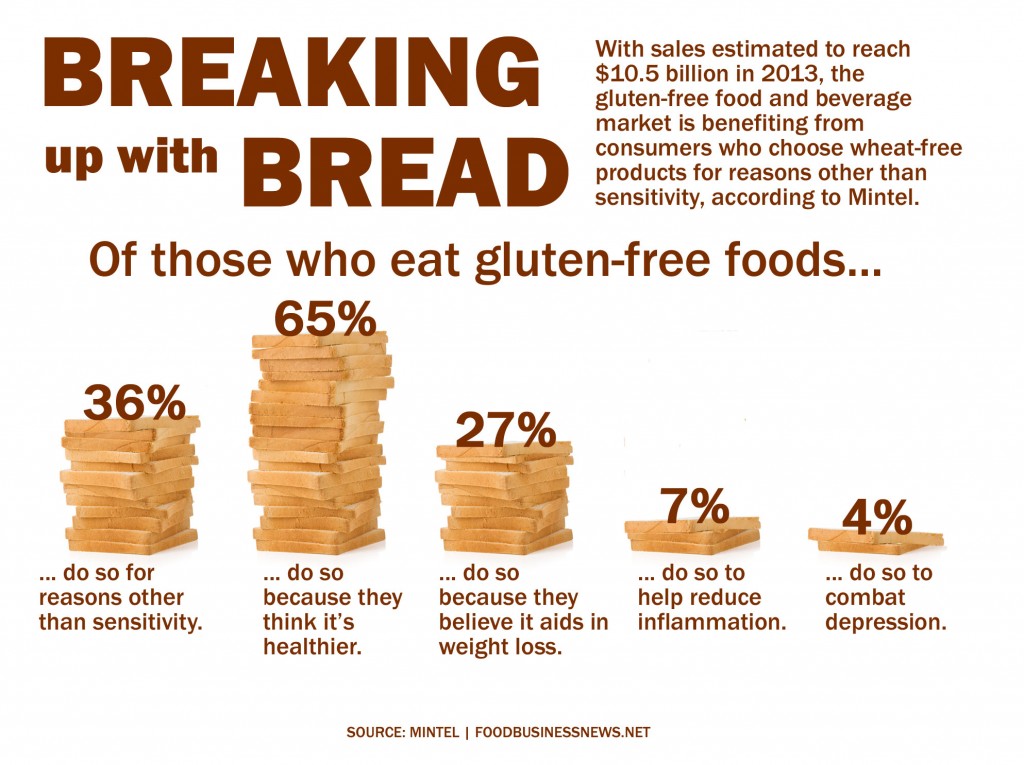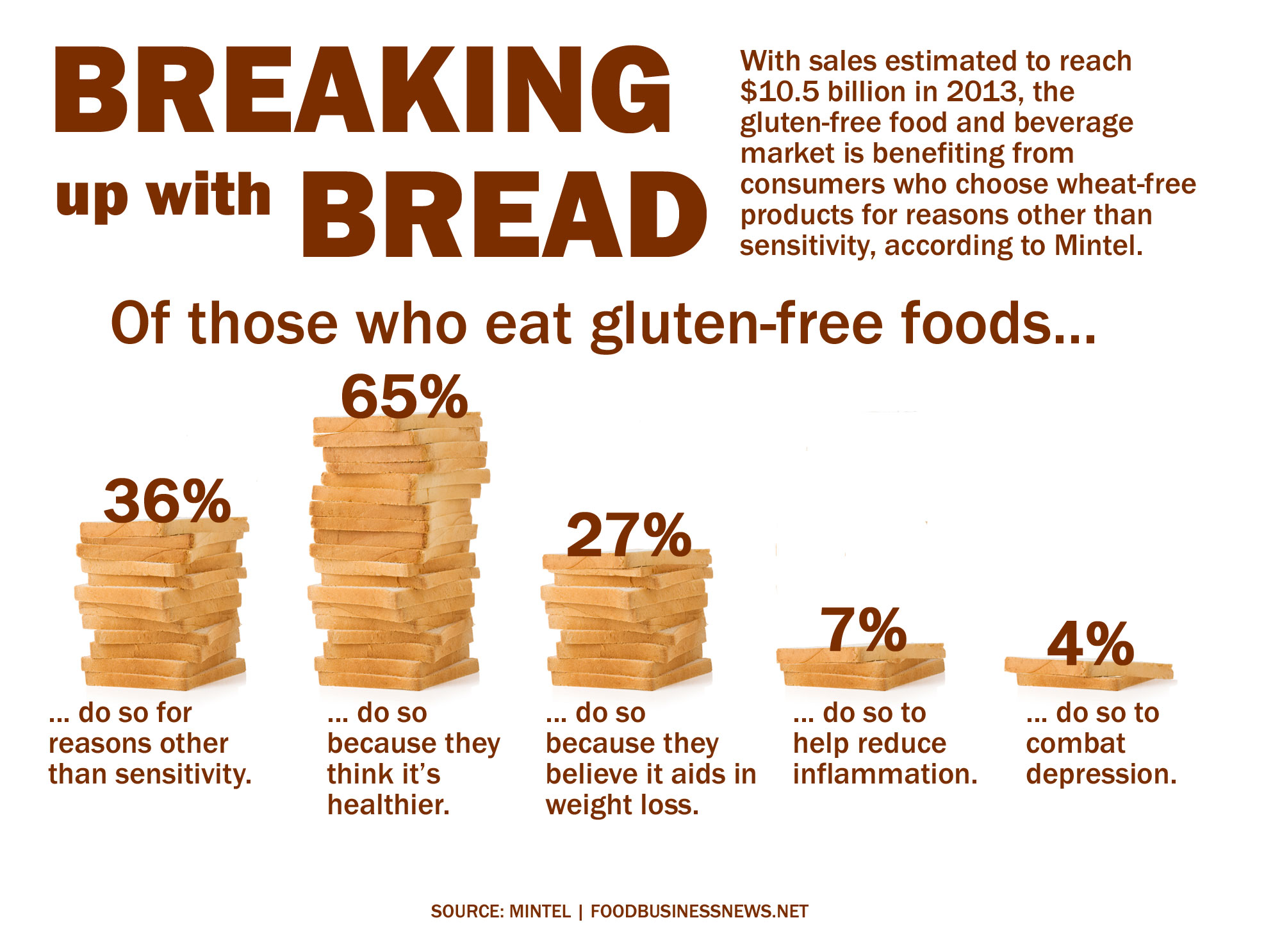
When starving French peasants showed up at her palace complaining that they had no more bread, the oft-quoted legend says, Queen Marie Antoinette infamously suggested they stop being fussy and “eat cake”.
At least that is what French Revolutionaries later – wrongly – claimed.
More than two centuries later, a growing number of “fussy” French eaters will have neither cake nor bread – unless they are gluten free.
After a slow start, the land of baguettes and tarte tatin has finally got caught up in the gluten-free mania.
Sales of gluten-free products at France’s large-scale retailers have grown tenfold since 2008 to hit €27 million (US $37.1 million) last year, said Brigitte Jolivet, president of AFDIAG, the French association for people with gluten sensitivities.
The industry now points to neighbouring countries like the UK and Italy, where the market for gluten-free products is already worth ten times as much, as evidence that there is vast potential for future growth.
“It is changing from a niche market to a mass market,” says Coralie de Rozières, the head of gluten-free products at Nutrition & Santé, France’s leading manufacturer of gluten-free products.

Gluten sensitivities and healthy diets
Consumers who choose to avoid gluten generally do so either on medical grounds or to lose weight.
Health experts say a growing number of people worldwide are sensitive to gluten, a hard-to-digest protein found in wheat and several other grains.
A gluten-free diet is the only treatment for people with Celiac disease (CD), a potentially life threatening autoimmune condition.
Up to 1% of Europeans are thought to have CD, according to AFDIAG, which estimates that only 10 to 20% of people suffering from the disease in France are actually diagnosed with CD.
Far more people are thought to be affected by milder sensitivity to gluten. In all, estimates suggest up to 8% of people in France suffer from some form of intolerance to the protein.
Growing awareness among doctors and patients is helping address the problem – and also boost sales of gluten-free products.
The industry also benefits from the growing use of gluten-free diets for weight-loss and healthy living, as championed by many athletes and stars.
With their rich food tradition, the French have traditionally been somewhat resistant to fad diets.
But there have been a few exceptions, such as the hugely popular – and controversial – Dukan Diet, a protein-based diet designed by French doctor Pierre Dukan.
Last year, gluten-free diets found a new advocate in French tennis star Jo-Wilfried Tsonga.
When Tsonga defeated Switzerland’s Roger Federer at the French Open, sports daily L’Equipe asked whether the new diet should be credited for the Frenchman’s victory.
“Clearly a large number of our customers aren’t actually gluten-sensitive,” says de Rozières.
French boom
As more French customers cut out gluten for medical or weight-loss reasons, a growing number of manufacturers are hopping on board.
De Rozières says France’s gluten-free boom began in 2009, when the first large-scale retailers began to sell gluten-free products.
AFDIAG, which owns the rights to the gluten-free logo in France, currently licenses 30 French manufacturers to use the recognizable symbol of crossed-out wheat.
Four supermarket chains (Carrefour, Auchan, Leclerc and Casino) now have their own gluten-free product lines. A fifth will join them in January.
The trend is having an impact on the entire food-processing industry, including the key baking and biscuit-making sector, which accounted for sales worth €17 billion in 2010.
Last November, AMEC, the association of French millers, held a conference on gluten sensitivities.
Nutrition & Santé, which acquired gluten-free specialist Valpiform in 2012, has an entire factory dedicated to research and development in gluten-free products.
AFDIAG’s Jolivet says this is a costly venture, which explains why gluten-free products come with a higher price tag.
“The base ingredients are more expensive than wheat. Each of them has to be analysed, as does the final product; and everything has to be produced in a controlled environment,” she said.
The French government partially reimburses the cost of gluten-free bread, pasta, biscuits and flour for those diagnosed with CD.
Judging by the rising demand, other consumers appear willing to pay a little extra for their gluten-free croissants and pains au chocolat.
“We are far from reaching the market potential,” says de Rozières. “It’s a sector with a great future ahead of it.”

